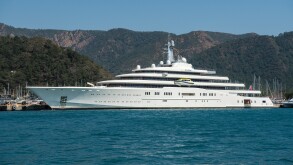The case
The background to the case, and a previous judgment delivered by the Administrative Court of Stockholm, have been presented and analysed in the previous article by KPMG Sweden. As a summary, the case concerns a Swedish company (AB), which had been acquired by a US company (Corp). According to the Swedish Tax Agency (STA), when acquiring AB, Corp acquired the right to retain returns from the IP developed by AB. As a basis for this view, the STA considered that Corp controlled all the material risks connected to the IP after the acquisition and, therefore, possessed the “economic ownership” of the IP.
The Administrative Court ruled in favour of AB and judged that no transfer of economic ownership had taken place. In short, the court accepted an argument put forward by AB that it was unlikely that the IP could be transferred while the competence to develop the product was still in AB. The court also stated that a transfer was not apparent from the agreement that was in place between the parties.
Judgment by the Administrative Court of Appeal of Stockholm
In contrast to the Administrative Court, the Court of Appeal ruled in favor of the STA. The court emphasised that AB had, in initial responses to the STA during the tax audit, stated that the agreement in place between the parties did not reflect the actual conduct and that significant functions and risks had been transferred following the acquisition. AB had later retracted these comments, but the court stated that as no reason had been given to why the comments had been made if they were wrong, they should be regarded as accurate.
The Court of Appeal considered that it was proven that Corp did not have the knowledge required to develop the IP. However, in the court’s opinion, the decisive factor when determining which company controlled the product development risk was which company could say no to new projects. According to the court, the risk should therefore be allocated to Corp since Corp was always informed about product development initiatives and could always block them.
The court agreed with the STA’s view that the arm’s-length remuneration for the transfer of IP should be calculated based on the acquisition price for the shares in AB, while subtracting the value of the business that was still in place in AB after the transfer.
Implications for MNEs
The case has implications for MNE groups that are either contemplating to acquire, or are in the process of acquiring, a Swedish company with significant IP ownership. The case implies that there is a risk that a third-party acquisition of shares in a company holding IP for which the control of the development, enhancement, maintenance, protection and exploitation (DEMPE) functions are shifted to the acquiring entity, may result in a transfer of said IP and a subsequent exit taxation.
It is rather common that the overall strategy relating to IP development and sales changes upon acquisition, as these are normally included in the overall governance of a parent company in relation to its group. As a result, the STA’s and Court of Appeal’s view results in a reclassification of the transaction and implies that an acquisition of shares in a Swedish company owning IP would in most cases result in a subsequent transfer of IP to the ultimate parent.
Moreover, the interpretation of the STA and Court of Appeal, if applied more broadly, may result in that it will not be possible for any other entity within an MNE group apart from the ultimate parent company which has the ultimate decision rights to be regarded as the economic owner of IP. However, in the authors’ view, such an effect may be in conflict with the OECD Guidelines, as the Guidelines state that the right to retain returns from IP should be awarded to the entity that performs and controls the relevant DEMPE functions, which may not be the parent company in many cases. It is our view that the ruling is not in line with the Swedish arm’s-length principle. We are hopeful that the case will be appealed and that the Supreme Court grants leave to appeal.
Nevertheless, MNEs should prepare to defend their position if IP related to an acquired company is not centralised subsequent to an acquisition. For example, this could be done by analysing the distribution of DEMPE functions before and after an acquisition in order to assess the facts and circumstances and align the transfer pricing with the value creation. In addition, we recommend considering whether any mitigating measures should be adopted in relation to an acquisition, such as making an open disclosure in the income tax return, in order to mitigate the levying of tax penalties as a part of transfer pricing adjustments.
Maria Andersson
T: +46 8 723 96 12
Karolina Viberg
T: +46 8 723 94 52













